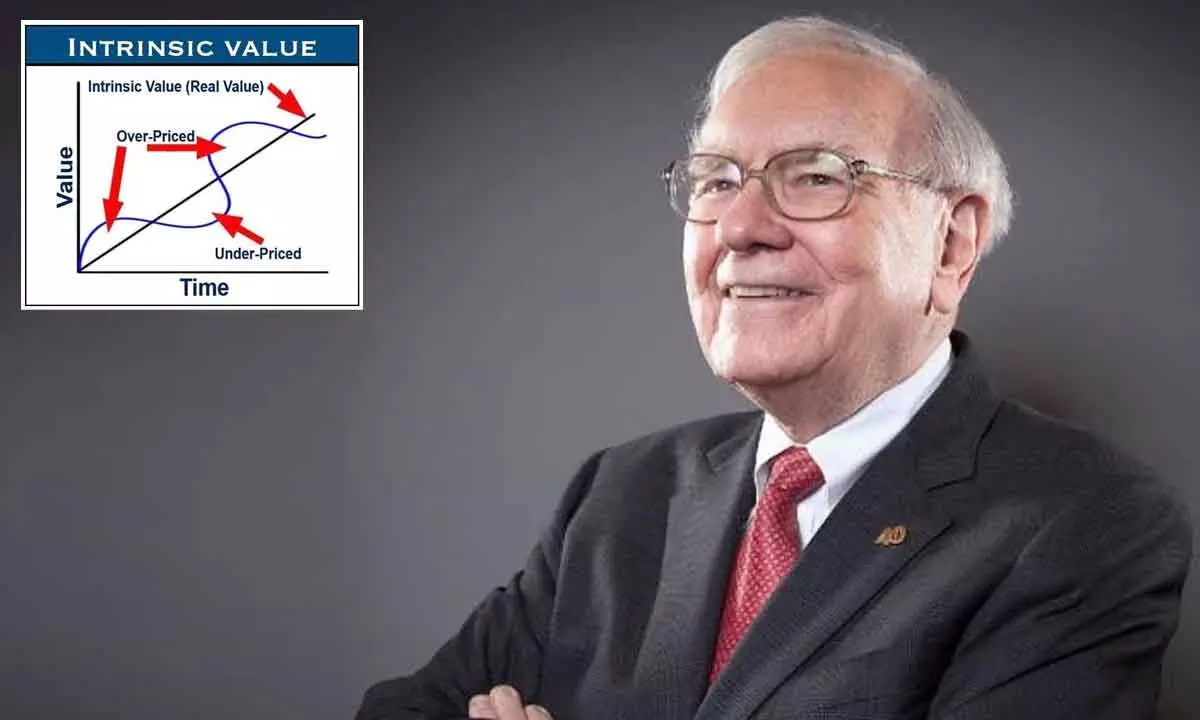Warren Buffett harping on ‘margin of safety’ investment mantra is bang on
Smartness is in understanding ‘intrinsic value’ and ‘price’ concepts
image for illustrative purpose

‘Intrinsic value’ represents the estimated true value of an asset based on its fundamental characteristics and future cash flows, while ‘price’ is the actual value at which an asset is currently being traded in the market. Discrepancies between intrinsic value and price can create opportunities for investors who are able to identify undervalued assets (where the price is lower than the intrinsic value) or overvalued assets (where the price is higher than the intrinsic value)
Kimat Aur Mulya Ke Antar Ko, Samajho Janch Parakh Kar.
Mulya Jyada Aur Kimat Kam, Kharid Lo Mat Der Kar
(Translation: Distinguish price from value, don't misconstrue,
High value, low price, seize the cue, act on the view!)
Intrinsic value and price are important concepts that help determine the worth of an asset (stock or company). They are used to assess whether an asset is overvalued, undervalued or fairly valued in the market.
Intrinsic value: It is the estimated true worth of an asset based on its fundamental characteristics, such as its underlying earnings, cash flows, growth prospects, and risk factors. It's the value that an asset should have in an ideal world, where market emotions and short-term fluctuations do not influence the valuation. Intrinsic value attempts to reflect the actual economic value of an asset, considering its potential to generate future cash flows. Various valuation methods, such as discounted cash flow (DCF) analysis, are used to estimate intrinsic value. Investors often seek assets that are trading below their intrinsic value, as these are considered potential opportunities for gains.
Price: On the other hand, ‘price’ is the current market value at which an asset is being bought or sold. It is determined by supply and demand dynamics, investor sentiment, market trends, news and various other factors that may or may not accurately reflect the intrinsic value of the asset. Prices can be influenced by short-term market fluctuations, investor behaviour, macroeconomic factors, and even speculation.
As a result, prices can deviate from the intrinsic value, leading to overvaluation (when the price is higher than the intrinsic value) or undervaluation (when the price is lower than the intrinsic value).
‘Intrinsic value’ represents the estimated true value of an asset based on its fundamental characteristics and future cash flows, while ‘price’ is the actual value at which an asset is currently being traded in the market. Discrepancies between intrinsic value and price can create opportunities for investors who are able to identify undervalued assets (where the price is lower than the intrinsic value) or overvalued assets (where the price is higher than the intrinsic value).
It's important to note that while investors strive to make decisions based on intrinsic value, short-term price movements can still be influenced by a wide range of factors beyond fundamental analysis.
Margin of safety: The margin of safety is the difference between the intrinsic value and the market price. It's essentially the buffer that protects investors from unforeseen market fluctuations, errors in valuation and other such uncertainties.
Warren Buffett, often referred to as the "Oracle of Omaha," emphasises the importance of the margin of safety in his investment philosophy. He suggests that investors should only invest in assets that are trading at a significant discount to their intrinsic value. By doing so, investors reduce the risk of capital loss and increase the potential for gains.
By following the margin of safety principle, investors aim to avoid overpaying for assets and minimise the impact of market volatility. Buffett's success as an investor is often attributed to his disciplined application of this principle and his ability to identify opportunities where the market price offers a substantial discount to intrinsic value. The concept serves as a guiding principle for value-oriented investors seeking to make prudent investment decisions. Happy investing!
(The writer is senior vice-president, SBI Funds Management Ltd; (Translation and Synopsis by Dharmang Shah, Vice President, SBI Funds Management Limited)

